MAYO, YUKON — Even after repeated visits by this journalist to Atac Resources’ (TSXV: ATC; US-OTC: ATADF) Rackla gold property in the central Yukon, the scenery as we journey into camp is never short of impressive. The company’s 185 km long land position runs through lush valleys alive with mature black spruce and lined by talus-covered hillsides. There are a few jokes during the helicopter ride about how Atac could run an ecotourism resort at the site if the whole mining thing doesn’t work out.
But that’s unlikely to happen because Rackla has been delivering discovery after discovery over the past six years.
Atac popped up on the industry radar screen back in 2010 when it announced Canada’s first Carlin-type gold discovery with a highlight intercept of 65 metres grading 4.65 grams gold per tonne at the Osiris cluster in hole 10-1.
Today, Atac is trying to balance making new discoveries with advancing those it has already made.

A helicopter at Atac Resources’ Rackla gold project in the Yukon. Photo by Matthew Keevil.
“These weaker markets over the past few years have obviously impacted share prices across the industry,” Atac president and CEO Graham Downs says during the walk across the company’s well-built camp in a tree-lined valley.
“We’ve had to be careful about equity dilution, but we have a project that can take some serious drilling. We have the team and infrastructure in place to crank it up really fast, and I’m hoping if better markets persist we can do just that. Given where our property is located, we know critical mass would be required for a development scenario to take shape,” he says.
Atac’s Osiris target is at a 1,860-metre elevation, and gold mineralization has a 1,200-metre vertical extent. The 12 sq. km Osiris cluster consists of four zones: Conrad, Osiris, Sunrise and Ibis.
Conrad is the most advanced, and has returned some eye-opening intercepts, highlighted by 42.9 metres of 18.44 grams gold per tonne from 66 metres deep in hole 12-114.
A tricky part, however, is the alpine to sub-alpine topography, which features north- and south-trending rocky spurs and valleys that flank a main east-trending ridge within the Nadaleen Range of the Selwyn Mountains.
Atac’s strategy in 2016 has been to focus on two new targets it hopes will lead to more near-surface gold, with the impressive grades characteristic of the Carlin-type discoveries.
Downs points out the company’s rotary air blast (RAB) drill unit, which can drill scout holes at a much cheaper cost than diamond drilling.
Atac has spent much of its time this field season west of Osiris at the Anubis cluster and its new Orion target, where the company cut 47 metres of 3.79 grams gold from 15 metres deep in discovery hole 15-26.
“We were really excited about Orion when we made the discovery last year, because it’s almost right at surface beneath a veneer of overburden,” Downs says during a helicopter tour of the Anubis trend. “We speak about critical mass a lot because given our infrastructure conditions, it is really imperative we identify these near-surface targets. Drilling out here is obviously expensive, so either we bring discoveries to market to fund exploration ourselves, or we attract a major partner to fund heavy drill campaigns.”
Cruising over the ridgetops that mark the Nadaleen trend around Orion, we see the planned location of 2,000 metres of RAB drilling intended to test regionally extensive pyritic siltstone unit along strike and to the north.

The landscape at Atac Resources’ Rackla gold property in the central Yukon, 55 km northeast of Keno City. Photo by Matthew Keevil.
Atac mobilized equipment in late July, and completed its first two diamond drill holes. On Sept. 12 the company released assays from three holes, highlighted by 61.3 metres of 2.75 grams gold from 18 metres deep in hole 16-10. The drill hole twinned and extended last year’s discovery hole.
Atac found gold mineralization within hydrothermally altered pyritic siltstones in the fault hanging wall and a fractured and intermittently oxidized reefal limestone unit in the footwall.
Downs points out during a trip over to the company’s Rau Airstrip that the Carlin-style discoveries and emerging potential at Orion are only part of Atac’s story. The Rau trend hosts the Tiger carbonate-replacement oxide gold deposit, where the company released an updated preliminary economic assessment earlier this year.
The study models a small mine at Tiger that would produce 302,000 oz. over a four-year mine life.
The 1,5000-tonne-per-day facility would cost US$109 million in development capital, and use carbon-in-pulp recovery.
Tiger’s measured and indicated resources are 5.7 million tonnes of 2.66 grams gold for 485,700 contained oz. gold.
The Rau trend sits on the western extent of the Rackla property, which is 55 km northeast of Keno City. Downs points out on a map the location of a proposed tote road that would branch off the Hanson Lake Road, and run 69 km to Tiger.
“There’s potentially big upside for us at Rau, because we have some low-hanging oxide mineralization at Tiger that could grow into an economic deposit,” Downs says. “It’s a question, again, of making another discovery in the area, and we’ve had impressive gold values all over the area during geochemical sampling.”
The most promising geochemical target sits near the Rau Airstrip, and has been named the Airstrip anomaly.
It’s the largest gold-in-soil anomaly in the Rau trend, and sits 3 km south of the Rackla Pluton, which is responsible for the gold mineralization Tiger. Atac drilled seven RAB holes at the target mid-year, which are highlighted by 13.7 metres of 1.43 grams gold from 55 metres deep in hole 16-6.
Atac hit gold in three of our first scout holes at the Airstrip, Downs says, and identified more oxide mineralization near the eastern edge of the proposed Tiger open pit during prospecting, which could add ounces to that mine plan.

Drill core at Atac Resources’ Rackla gold project in the Yukon. Photo by Matthew Keevil.
“What we’ve proven this year is that both these targets are prospective and warrant follow-up, in terms of mapping and further diamond drilling,” Downs says. “We’re on the way to permitting the tote road, which could help us with more advanced exploration at Rau.”
Atac shares have traded in a 52-week range of 25¢ to 95¢ per share, and closed at 53¢ at press time. The company has 123 million shares outstanding for a $60.5-million market capitalization, and reported $17 million in working capital at the end of June.
Exclusive Video Interview with Atac Resources CEO Graham Downs at Rackla:

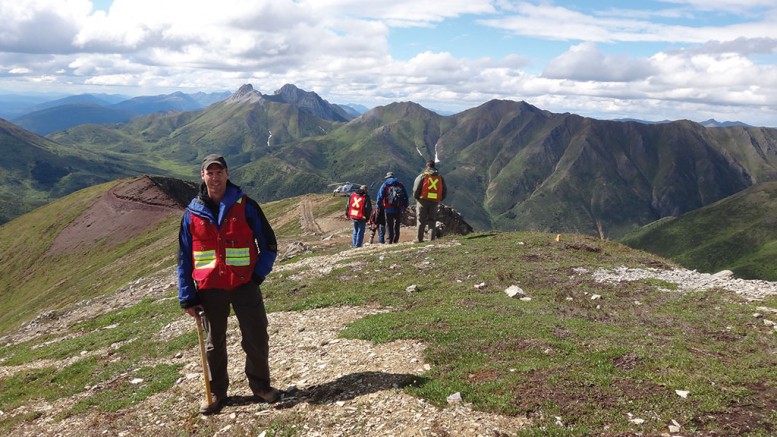
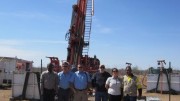
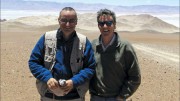
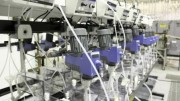
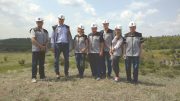
Be the first to comment on "Site visit: Atac builds critical mass at Rackla in Yukon"